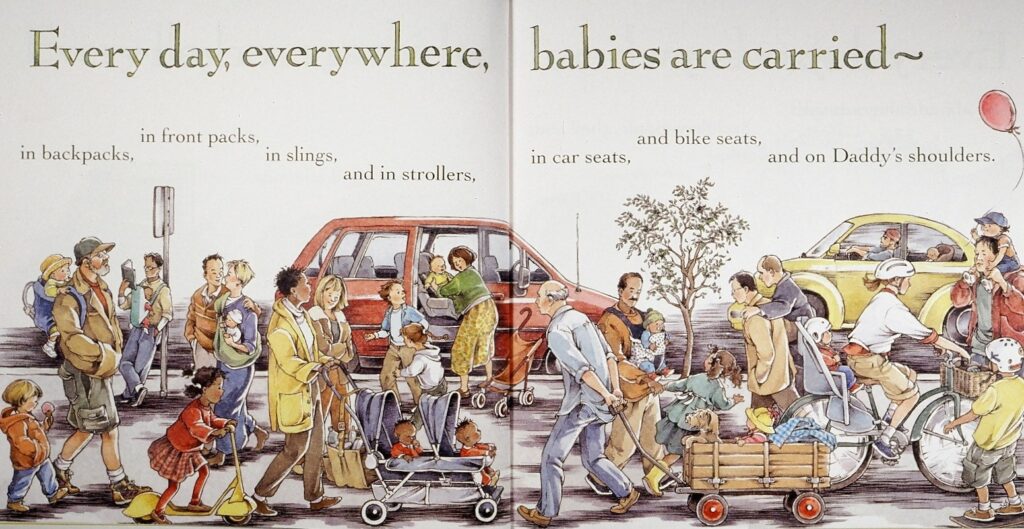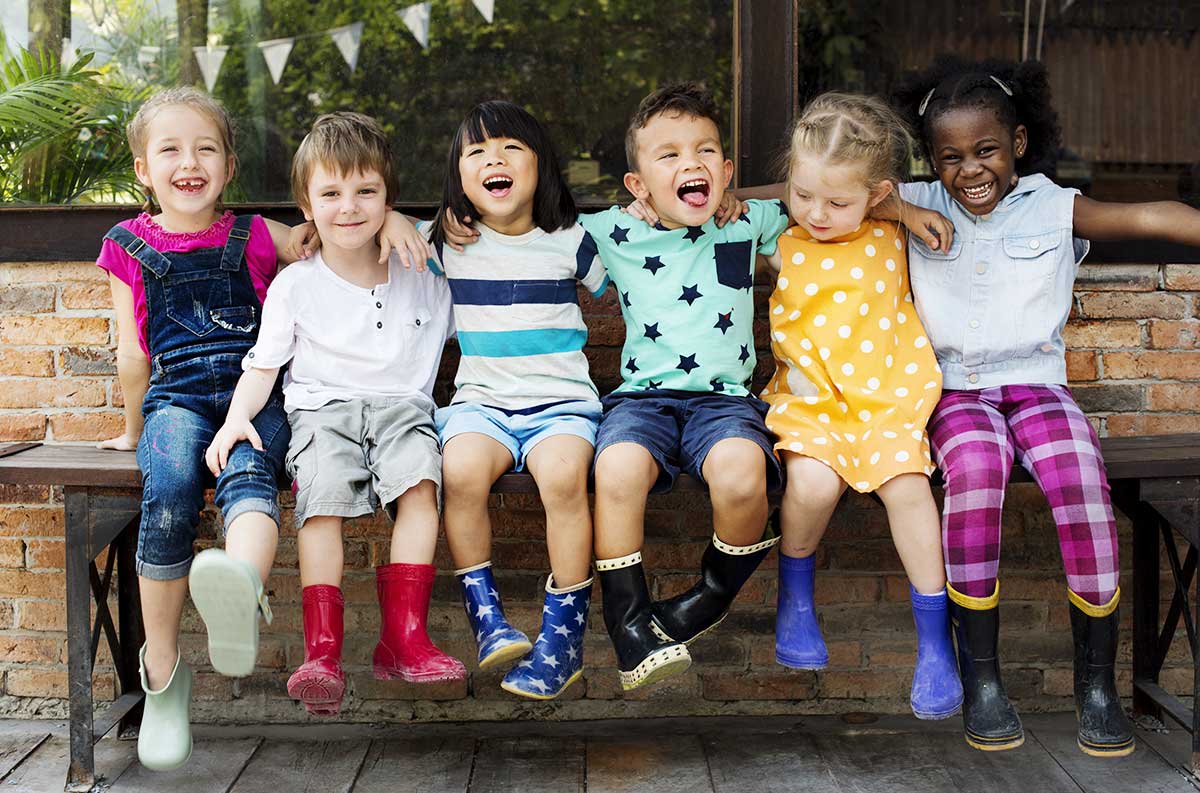
Inclusive Children's Book Teaching Guide
Everywhere Babies
What is this book about?
Every day, everywhere, babies are born. They are kissed and dressed and rocked and fed—and completely adored by the families who love them.
With irresistible rhyming text and delightfully endearing illustrations, Everywhere Babies is an exuberant celebration of all of the wonderful things that babies do best, such as playing, sleeping and crawling.
Who is depicted in this book?
- Racially/ethnically diverse LGBTQ+ led families
- Children or adults who transcend gender stereotypes
What early childhood themes and concepts does this book explore?
- Daily infant caregiving routines and the actions associated with them
- The many ways that adults show care and love for babies
- Infant play behaviors such as dropping, putting in, banging, and splashing, as well as interactive games such as peek-a-boo
How does this book support anti-bias education?
LGBTQ+ led families are included and celebrated alongside many other diverse families and caregivers, sending a strong message about family pride and positive social identities. Unfortunately, Everywhere Babies has been targeted and banned by hate groups seeking to erase LGBTQ+ led families from the classroom and eliminate their representation in public libraries. The families that appear to be LGBTQ+ led in this book are depicted no differently than other featured families; hence, the prejudice behind these attacks is clear and should be met with strong resistance.
Depending on how the book is shared or used—and the developmental levels of the children—Everywhere Babies may be used to support the following core goal from Anti-Bias Education for Young Children and Ourselves:
Identity—Teachers will nurture each child’s construction of knowledgeable and confident personal and social identities so that children will demonstrate self-awareness, confidence, family pride, and positive social identities.
How can this book be used to meet early childhood learning standards?
For all ages
Use Everywhere Babies to meet early childhood literacy standards >
For children from birth to age three
Teaching suggestion: Point out, model and encourage children to imitate the simple actions displayed in the book, such as peek-a-boo, pat-a-cake, banging, and clapping. Build vocabulary while imitating these actions by introducing simple phrases such as “baby slide” or “baby crawl."
What Illinois Early Learning Guideline does this meet for children from birth to age three?
Developmental DomainPhysical Development & Health
Standard: Fine MotorChildren demonstrate the ability to coordinate their small muscles in order to move and control objects.
Indicators for children:
- Begins to engage in parallel play, in closer proximity to other children without attempting interaction (7–18 months)
- Begins to engage in simple reciprocal interactions such as rolling a ball back and forth (16–24 months)
- Demonstrates a preference for select peers (21–36 months)
Teaching suggestion: Incorporate a doll into the sharing of this book and take turns imitating the actions and expressions of love and affection featured in the book.
What Illinois Early Learning Guideline does this meet for children from birth to age three?
Developmental DomainCognitive Development
Standard: Symbolic ThoughtChildren demonstrate the understanding of concepts, experiences, and ideas through symbolic representation.
Indicators for children:
- Imitates adult’s actions (7–18 months)
- Engages in simple pretend play (7–18 months)
- Engages in pretend play with familiar objects and experiences (16–24 months)
For preschoolers (ages three to five)
Teaching suggestion: Ask the children to identify and describe people, places and things in the book that are familiar to them and to compare those people and places to their own lives and experiences.
What Illinois Early Learning and Development Standards does this meet for preschoolers?
Language Arts Standard1CUse language to convey information and ideas.
Benchmark 1.C.ECa:
Describe familiar people, places, things, and events and, with teacher assistance, provide additional detail.
Teaching suggestion: Identify and describe different types of families in the illustrations and discuss similarities in how they show care and love for babies.
What Illinois Early Learning and Development Standards does this meet for preschoolers?
Social Studies Standard18BDevelop an awareness of self within the context of family.
Benchmark 18.B.ECa:
Understand that each of us belongs to a family and recognize that families vary.
See inside this book.

What other resources are available?
Numerous online articles describe the attempts to mischaracterize and censor this book, as well as the author’s responses. Two of these articles are listed below:
- "Florida School District Puts Warnings on 100 Books, Including Everywhere Babies" (Book Riot, August 2022)
- "Florida Nonprofit Group Wants Children's Book Everywhere Babies Banned for LGBTQ Imagery" (USA TODAY, April 2022)
